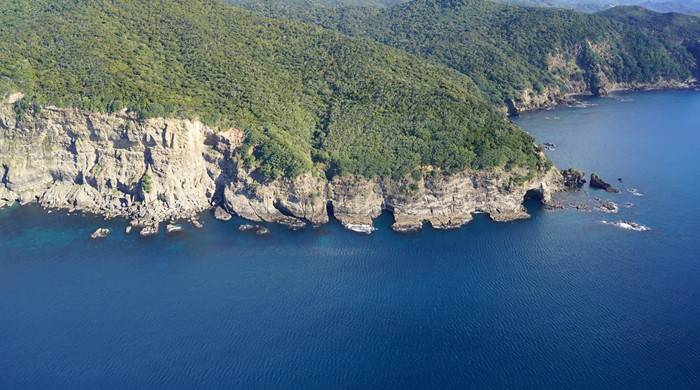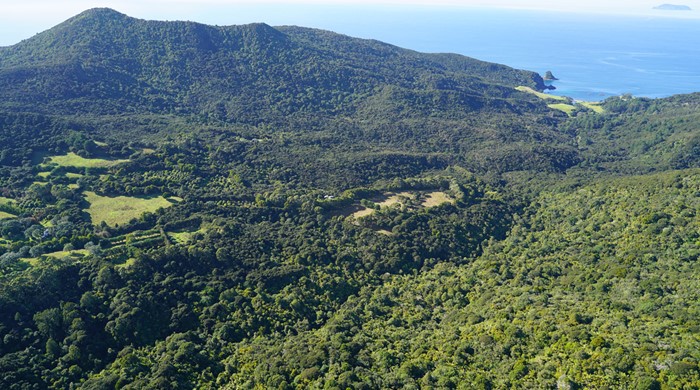Windy Hill Sanctuary
Size: 601 hectares
Site description
Windy Hill Sanctuary is a community-led conservation project involving integrated pest plant and pest animal control for biodiversity protection. It is located at the south-eastern end of Aotea / Great Barrier Island. Established in 1999, the restoration work covers 770ha of private and public land including 276ha of QEII covenant.

Conservation effort
Since the project's inception the group have trapped over 56,800 rats and mice (and an unknown number poisoned), 373 feral cats, 147 feral pigs, 300 feral goats and controlled 137 wasp nests. They have also controlled a range of pest plants. This is the largest area of integrated pest management on Aotea / Great Barrier Island.

Ecosystems
The vegetation here is a mosaic (mix) of regenerating kānuka forest and scrub (VS2) buffering a large patch of kauri, podocarp, broadleaved forest (WF11). There are also small patches of coastal forest (WF4) and pōhutukawa treeland, flaxland and rockland (CL1) around the coastal edge.
Native fauna
Biodiversity monitoring results show an upward trend in native bird numbers. Seabird surveys have found takoketai (black petrel) and ōi (grey-faced petrel) burrows.
Takoketai once bred on the New Zealand mainland, but breeding is now restricted to the Aotea / Great Barrier and Te Hauturu-o-Toi / Little Barrier islands. Takoketai are identified as a native species threatened with extinction and are classified as Nationally Vulnerable.
You can also see pāteke (brown teal) and kākā in this area, as well as populations of native lizards and rare invertebrates, including the Great Barrier Island paua slug and peripatus.



